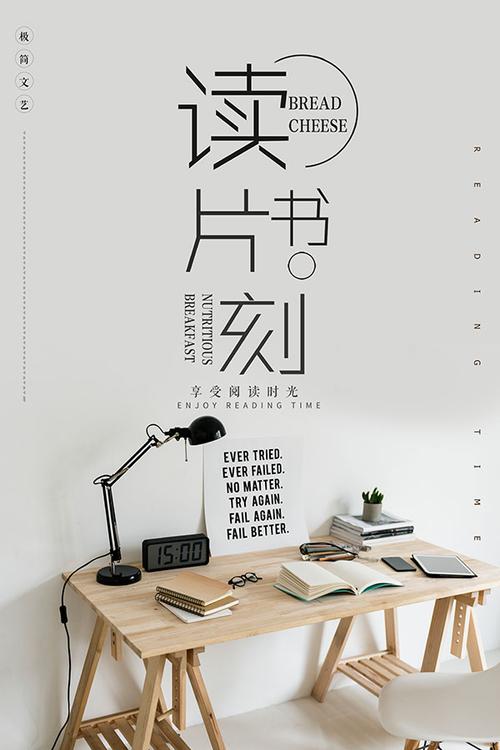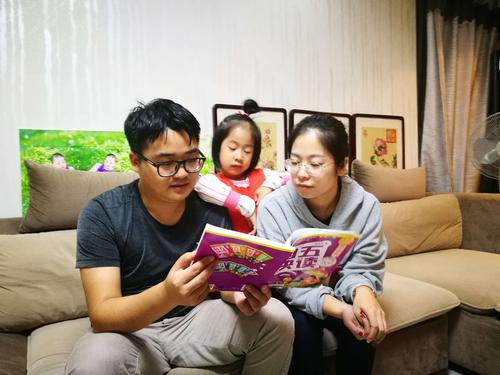关上窗户的英文户翻译户英语怎么说-大学生简历模板下载
2023年4月19日发(作者:尸位素餐)实用标准文案
英语元音辅音发音规则表
辅字组的读音
辅字组 读 音 例 词
b [b] bag bike bus blue
c [k] cake card
d [d] desk dad day
f [f] fine five face off
g [d] orange age
[s] face decide cinema
[g] good bag go
[] thank
[h] hello hat hot hand h
[] jacket job June j
[k] key like bike k
[l] hello like lake l
apple full bottle
[m] morning name me m
[n] no nice in n
[p] map pen apple p
[r] Frank red r
[s] spell thanks six s
[z] please is nose
[t] it what white ten t
[v] evening vest very v
[w] what we well w
[ks] box six x
[j] you yellow yes y
[z] zoo zero z
[] English she ship sh
[] China chess chair ch
[] thank three th
[] this that they
[k] black chick ck
[f] phone photo ph
[w] what white wh
[h] who whose
[tr] tree tr
文档大全
实用标准文案
dr [dr] dress
ts [ts] what’s it’s cats
ds [dz] beds ha中国诗歌发展史 nds cards
qu [kw] quite quiet
元音字母在重读开音节中的读音
元音字母 读 音 例 词
a [ei] name game
e [i:] he she me
i [ai] fine like
o [ou] go home
u [ju:][ u:] use blue
元音字母在重读闭音节中的读音
元音字母 读 音 例 词
a [?] Alice map black thank
e [e] bed let pen desk yes egg
i [i] is in it this sit six milk
o [] not box dog hot clock
u [] mum bus cup lunch
元音字母组合在重读闭音节中的读音
元音字母 读音 例词
组 合
ai ay [ei] say day again play
ei ey
al [o:] all ball talk wall
ea [i:] tea teacher please
ee [i:] green bee three
oa [ou] boat coat goat
oo [ u:] noon too moon food
文档大全
eight they grey
实用标准文案
ou [au] mouth house about
ow
oi oy boy toy noise [oi]
-r音节的读音
字母 读 音 例 词
ar [:] are car far farmer
or [:] or for sport渭城朝雨浥轻尘的下一句是什么 short
er her certainly
ir [:]
ur
or(w前)
[u] good look book cook
how now brown down
girl bird first shirt
turn nurse
word worse
文档大全
实用标准文案
自然发音二十八条拼读规则
1. 字母q总是与u在一起,读做/kw/, 此处u不作元音.
2. 字母c在字母e, y, i前读做/s/ (cent, city, cycle), 其他字母前读做
/k/(cut, cap, cop).
3. 字母e, i, y之前的字母g可以读做/j/(page, giant, gym), 其中字母e,
i之前的g也可以不读做/j/(get, girl, give); 其它字母之前的g读做/g/
(gate, go, gust).
4. 元音a, e, o, u在音节结尾(开音节)一般读做字母音(长音a, e, o,
u), 有助于学生正确划分并拼读元音字母+辅音字母+元音字母的不熟悉单词(r
e port…rather than rep ort).
5. 字母i和y经常读做/i/(big, gym), 但是也可读做I(silent, my, type).
6. 一个英语单词用字母y而不是i的结尾(my, by).
7. 有五种情况末尾的字母e不发音.(如me, she, 和 he的短单词末尾的字
母e读做e, 较长的单词末尾的e不发音)
尾字母e不发音应该被认为是”having a job” (承担一项工作)
7.1 bake gene time/type code cute 使他前面的元音字母发字母音..
7.2 love give blue true 使我们不要以一个v和一个u结束一个单词.
7.3 chance bodice charge allege 使g和c读软音/j/和/s/.
7.4 lit tle cas tle bot 在狱咏蝉骆宾王拼音版 tle dab ble fid dle 避免一个音节没有一个元音
字母.
7.5 are nurse raise bye ewe owe cause 这一条被Spalding女士叫做无工
作尾字母e; Sanseri女士叫做老工作尾字母e, 并说前四条之外的不发音尾字
母e都叫做老工作尾字母e.
7.5.1 使一个不是复数形式的单词不要以s结尾(dense而不是dens, purse不
是purs, false 不是 fals).
7.5.2 加长短的主意词(main-idea), 如awe, ewe, rye
7.5.3 区分同音异形词的含义. 如or/ore for/fore.
7.5.4 中英语和外来语中(那里的尾字母e是要发音的)留下来的, 现在不发
音. 如treatise giraffe
文档大全
实用标准文案
8.有五种字母组合发/er/的音/, 记住下面的句子.
Her nurse first works early. 这个句子是按英语用法中的降序排列的.
另外,or在w后业可以发/er/的音. 还要记住有些词尾的ar和or也发/er/的
音.如dollar, doctor.
9. 1-1-1规则: 单音节单词中, 结尾是单元音加单个辅音的, 在添加以元
音开始的词尾变化时,需要将关于夏天的古诗全部 末尾的辅音字母再写一次再加词尾变化.(如hop--
-hop ped). 但是词尾是x除外, 因为它由两个音/ks/.
10. 2-1-1规则: 双音节词中, 结尾是单元音加单个辅音的, 在添加以元
音开始的词尾变化时, 需要将末尾的辅音字母再写一次再加词尾变化(be gin-
-- be gin + ning). 第二个音节不重读的不能双写末尾辅音字母(en ter, pr
of it, bud get).
11. 去e规则, 以不发音的e结尾的单词在添加以元音开始的词尾变化是需要
去掉末尾不发音的e.(come----coming)
12. 是ie还是ei? 一般情况下, 应该是ie, 但是1) c之后用ei; 2)发字
母a的音时, 用ei(neighbor, weigh, vein). 还有下面的例外情形Neither
foreign sovereign seized counterfeit forfeited leis抱负的近义词是什么 ure. Plus: either
weird protein heifer:
13. 音素sh用在一个基本词的开头或是结尾(she, dish), 还用在一个音节
的结尾(fin ish), 但绝对不会在后一个音节的开头, 除非是以ship结尾(wo
r ship, friend ship).
14. 音素si, ti, ci最常用在一个基本词的第二及以后的开头, 发音/sh
/. 常常可以通过考察词根和根词来确定发/sh/时用什么样的音素.比如
infect to in fec tious / collect to col lec tion / potent to po ten t
ial
music to mu si cian / space to spa cious / finance to fi nan cial
soci (companion) to so cial / ancien (old) to an cient
cruc (cross) to cru cial / speci (kind) to spe cial
15. 音素si在前一个音节以s结尾时(ses sion)发/sh/, 一个基本词经过词
尾变化后只有一个s(tense---tension), 其中的音素si发/sh/.
discuss to dis cus sion / compress to com pres sion / admis to ad mis
sion
文档大全
实用标准文案
16. 音素si可以发/zh/, 如vi sion, di vi sion, oc ca sio士不可以不弘毅 n, ex plo si
on.
17. 只有一个元音的单音节词,常常双写词尾的l, s, f. 比如will, off, m
iss. 有时双音节词也用到这条规则, 如re cess
18. 词尾为长音a时, 常用ay在词尾而不是a. (bay, day, decay)
19. 元音i和o后面有两个辅音时,常发长音. (find, old)
20. s从不在x后, 音素x包含一个/s/音, /ks/.
21. 去L规则1: all单独出现有两个l, 但在前缀中只有一个l.(al most,
al so, al though).
22. 去L规则2: till和full单独出现有两个l, 作后缀只有一个l. (un 柏杨白话版资治通鉴 t
il, plen ti ful).
23. 音素dge只用在单元音后面,而且这个元音发短音(badge, edge, bridge,
lodge, budge).
24. Y变I规则: 进行词尾变化时, 词尾是一个辅音字母+y, 要变y为
i. 下列两种情况驻外(1)加-ing, (2)变后会引起音节分裂.
city/cit ies beauty/beau ti ful play/player funny/fun ni est
multiply/mul ti ply ing rely/re li able cry/cried deny/denied
25. 音素ck只用在单元音后, 而且这个元音发短音(back, neck, lick, roc
k, duck).
26. 字母开头的z永远发/z/, 不会发/s/.
27. 音素ed有三个音, 基本词以/t/和/d/音结尾, ed发/ed/(divide---divi
ded, heat---heated); 基本词以浊辅音结尾的, ed发/d/( lived), 以清辅
音结尾的发/t/(stopped)
28. 单词常常(always)在双辅音间分音节[但要注意不要把辅音字母组合分开
(如ma the ma简单的近义词和反义词 tic)], 重读音节的辅音才发音, 非重读音节的辅音不发音li
t tle.
翻译时, consonant译作辅音, vowel译作元音.
文档大全
实用标准文案
自然拼读法基本规则:
1. 二十六个字母的读音 (Letter Sounds).
五个元音字母(a, e, i, o, u), 每个发两种音:长音(其字母
音)和短音
y不在单词开头时,一般被看做元音
2. 单元音单词拼读 (Consonant-Vowel-Consonant
Combinations)
如果一个英语单词或音节里只有一个元音, 且元音不在末尾,
这个元音一般发短音.
如: Sam, cat, mat, 等等.
Beginning Consonants
Ending Consonants
One Vowel Word, Short Vowel Sounds
3. 双元音单词拼读(Two Vowel Words):
一个单词或音节里有两个元音时, 一般来说,前边一个元音发长音
(其字母音), 后边一个元音不发音.
如: make, mail, may, hay, say, see, sea, meet, meat, key, five,
nine, tie, road, coat, toe, cute等等.
4. 双/三辅音在一起时的联读 (Consonant Blends)
Beginning consonant blends (bl, br, cl, cr, dr, fl, fr,
文档大全
实用标准文案
gl, fr, pl, pr, sc, sk, sl, sm, sn, sp, st, sw, tr, tw, scr,
spl, str)
Ending consonant blends (ft, lf, lm, lp, lt, mp, nd, nk,
nt, pt, sk, st)
Words ending in ll, ss, ff
Consonant digraphs (ch, th, sh, wh)
5. 特殊读法(1)– 带元音的特殊读法(Irregular Vowels)
igh, ing, ind, ild, ar, or, oi, oy, alt, alk, ost, old,
er, ir, ur, ew, sion, tion, eigh, all, ow, ow, ou, ay, ous, ed,
ed (t), ed (d), aw, au, oo, oo
以上字母组合作为整体音节发音。需记住它们所发的音。
Examples:
ar (car, far), air (hair), are (hare), au, augh (caught),
aw (hawk)
al, all (all, tall, mall, hall), alk (talk, walk), alt (halt,
salt), ay (may, play)
ew (new, few), eigh (eight, weight),
ed:
says /ed/: patted, landed, lifted
says /t/: walked, hopped, stopped
says /d/: cried, played, chewed
文档大全
实用标准文案
er (sister, brother), ir (girl, fir, firm), ur (burn, hurt)
ie (field), ing(king, sing, dancing), ind (find, kind,
behind), ild (mild, wild, child), igh (high, night, light), ire
oi (oil, boil), oy (boy, toy), old (old, cold), ost (most,
host), olt,
oo (book), oo (tool, school), or (or, for, horn),
ow (读音一:cow, now, how, bow; 读音二:bow, low,
blow, snow),
ou (shout, out, loud)
ould (could, would), ough (五种不同的读音:cough,
through, ought, slough, plough),
ought, , ous (famous, nervous),
ue (cruel), ui (fluid)
tion (attention, fiction), sion (passion, expression),
ending sounds : ang, ong, ung, edge, le
6. 特殊读法(2)
如果一个单词或音节里只有一个元音,而且元音在末尾, 这个
元音一般发长音(其字母音) (Vowel at the end).
如:me, hi, go, baby, table, humor,hibernate 等等。
Y在末尾 (作为元音处理)(y at the end):
文档大全
实用标准文案
单音节词, 没有其他元音,y发”I”(one syllable word,
y at the end (pronounced as “I”)): my, why, fly, sky
多音节词, y发”E” 的音(two or more syllables, y at
the end (pronounced as “E”)): daddy, mommy, baby,honey, crazy
7. 特殊读法(3) - 固定读音的单词 (Sight Word):
is, are, the, a, to, here, hey, have, son, love, come, give,
field…… 等.
它们不遵守前边的发音规则,需要死记硬背。
8. 特殊读法(4) – 辅音的特殊读法
有一些辅音不发音 (silent consonants).
Silent b: comb, lamb
Silent h: ghost
Silent k: knife, knock, knob, know…
Silent w: write, wrist, wreck …
\"c\" 和 \"k\" 在一起时, 发一个音: quick, black等.
\"q\" 总是和\"u\"在一起:quite, quick, quit, quilt等.
之所以指出这一点, 是在这里u不能再被认为是元音, 而
是和q一起组成一个辅音组合. 于是, 在quite这个单词里只有
两个元音, 是双元音单词, 第一个元音i发字母音, 第二个元音
e不发音.
\"p\"和 \"h\"在一起, 发/f/的音: phone, photo.
文档大全
实用标准文案
复数s及末尾s的读音(Plural s and the sounds of ending s)
c和g 的两种读音:
如果i(或y)或者 e 跟在c或者g的后边, c发/s/, g发
/j/的音: center, cigar, nice, mice, gem, giant, gym, page.
其他情况下, c发/k/, g发/g/: can, clap, cup, great,
glad, got, goat, log.
特殊情况: get, give
9. 多音节单词和复合词 (Words with multiple syllables and
compound words)
多音节单词: believe, multiple, syllable, compound
复合词: homework, highway, sidewalk, inside, outside
文档大全
weenie是什么意思nie在线翻译读音例句-丽江旅游景点介绍
更多推荐
thank是什么意思nk在线翻译读音例句








发布评论